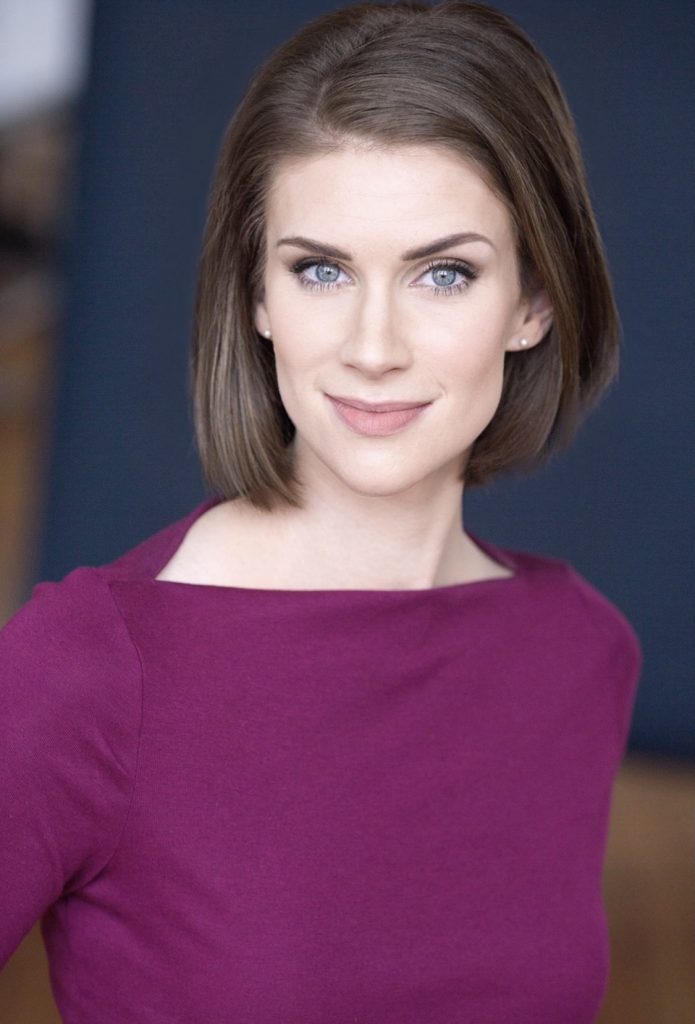I hate medical offices. The one I’m sitting in now is especially bleak and harsh. The tiny exam room makes me feel trapped with its cold floors and blinding fluorescent lights. This loathing is all I’m thinking about as I wait for the pain management doctor. I’ve given no thought to what he might say during this first visit. By now, I’m used to doctors not having answers for me and I have no reason to think this doctor will be any different. I’m assuming shots are the most painful possibility for today. Even if I anticipate the diagnosis I’m about to hear, I can’t know how it will make me feel. Like so many things in life, you don’t know until it’s happening to you. The casual hello the doctor offers upon entering the room provides no clue to the emotional whiplash I’m about to experience. Turns out the shots would have been less painful.
The doctor quickly begins a brief report of my symptoms. He speaks in monotone and I notice my back pain increasing while I sit in the hard chair. He recites a jumble of results from weeks of blood work, doctors appointments, imaging, and lab work-ups. Then without warning, he says, “This is bad. You’re 35. You shouldn’t be living like this.” All I can do is stare blankly back at him, mouth hanging open as if there’s a rebuttal, but there’s not. In one sentence, without looking up from his computer, he has obliterated my hard-earned normalcy. The normalcy I’ve insisted on applying to my anxiety, physical limitations, and daily pain. My mind tries to account for what it knows to be true or at least what it’s told itself in order to cope. It’s true, I no longer notice how badly my heart races while walking through the grocery store. The daily nap I need to cope with fatigue has become a part of my routine. It’s normal to be unable to pick up my toddler or carry the laundry downstairs. I’m proud of my hard-earned ability to walk a few blocks, ignoring the fact that I should be able to run if I want. The truth is, I’ve spent so long away from “normal,” I’ve forgotten what it looks like. In the long term, this breakdown of my internal facade may be a good thing, but at the moment it feels like being hit by a car.
The doctor hands me a piece of paper that lists three diagnoses in a neat column. Adjacent to the first column is another with the same word accompanying each diagnosis. I stare at it so long that the type leaves an imprint I can see when I close my eyes.
Chronic. Chronic. Chronic.
Chronic is listed three consecutive times. Persisting for a long time or constantly recurring, long-lasting and difficult to eradicate. The definition doesn’t include the word forever, but should it? I’ve been through illnesses, surgeries, pregnancies, and recoveries. Those typically have ending dates, a prescribed time of improvement, a finish line. ‘Chronic’ promises not to end and contains the sinister malady of finishing off lots of other things in the process. Now that we’re being honest, I don’t like how chronic looks at 35, but for the first time, I’m wondering what it will look like at 45 or 65. What else will it take away in the coming years?
The first diagnosis listed is fibromyalgia and I immediately resent it. I know it can be used as a catch-all, especially for women. The doctor keeps talking and I can’t decide if he’s doing the same as the diagnosis; covering me in a blanket that will potentially smother. The pasty walls of the exam room are reflecting the bright ceiling lights, making me squint. My reactivity to the environment reminds me of the other symptoms I’ve started to take for granted. I think of the aching pain all over my body, my new sensitivity to touch, and the fatigue that soaks my limbs each day. Maybe he’s right about fibromyalgia.
I don’t recognize the second diagnosis: lumbar facet arthropathy. I manage to ask what it is, unsure if he’s already explained it. It’s arthritis of the spine and results, the doctor is confident, from the physical trauma of the car accident (the non-figurative one that broke my back 14 years ago) and the metal appliances left in my body. I can feel my lower back burning and I have the angry impulse to tell it to shut up. This diagnosis includes words like degenerative and it feels the scariest. Later I’ll google it and not feel any better about it.
It doesn’t take much explanation for me to understand the final diagnosis on the list. Cervical myofascial pain syndrome sounds like the medical diagnosis for being physically braced your entire life. Think about the position you likely assume if you’re protecting yourself. It’s what the body naturally does if a punch is about to be thrown. Your shoulders cave over and your muscles tense. It’s the same protective position a life of hypervigilance requires and my shoulders have lived there for years. Eventually, damage is done. The muscles can’t let go and even if they do, they spasm from the strain of trying to protect you.
As the doctor spits out the details of the three diagnoses, I realize I’m not completely shocked and yet there is a dissonance. I can admit to myself I feel relieved. I haven’t made this up or exaggerated my symptoms. I knew there was something wrong. I feel the heat, pain, and tension of it every day and now it has a name. I know having a diagnosis can be helpful. It can provide a course of action and the desperately needed convincing of insurance companies. Now doctors, and maybe even my own mother, will believe me.
With the relief there is also a defiant incredulity and a heavy sadness. I feel it behind my eyes threatening to spill over into tears because I don’t want this to be real. The doctor has labeled my symptoms, but is that all it is? There seems to be only a fragile line between a diagnosing and a sentencing. Giving my symptoms a name has made them undeniably evident. It has caused them to grow and breathe. Suddenly they are living things making themselves at home where they are not welcome. I realize my hands are gripping the edge of my chair. I try to relax and roll out my neck but it’s too late, the symptoms are swelling. They’re filling the tiny exam room and crowding me out.
The doctor is undeterred by my internal crisis and never stops talking or typing. I realize that he hasn’t said my name since he came in and now he’s moved onto my treatment plan. There will be spinal shots under anesthesia, dry needling, electrodes, another MRI, physical therapy, deep tissue massage, a gluten and dairy-free diet, and medication for depression and pain management. He bothers to look up and says to my face, “and you need a new therapist. You have to do more than talk now.” I didn’t expect that from the needle guy. For months, trauma-informed friends have told me I need therapies and techniques that might help my mind and body connect so they can work together. Originally the idea felt poetic, but now, as these diagnoses push me further into my chair, it feels urgent and overwhelming.
Afterwards, I stand outside the doctor’s office for a long time. The cooler air feels good. Without giving it much thought, I do the next thing and call my other doctors to hear their opinions on this plan of treatment. As I leave messages with the fifth and sixth doctor, I become aware of their collective numbers. I’ve heard stories about trying to coordinate care and communication between so many physicians. How has it gotten to this point? All I can think is that I never saw this coming and yet in hindsight it makes perfect sense. For years, my body has been put through hell and yet I have done very little to care for it. My mind has also suffered, traumas and ongoing stresses, the effects of which might have been more obvious if I wasn’t so busy trying to survive.
I try to deepen my breath. I close my eyes but swear I can still see it: chronic. The word that goes on and on. The word that changes the meaning of each of the diagnoses. I decide this is the core of it. ‘Chronic’ promises to be dependable but I want to be able to rely on myself. I realize I assumed there’s a maximum to the bad things I’ll experience and this, chronic at age 35, is beyond the limit. It’s an overstep, a breach in the contract I subconsciously negotiated with a higher power at some point. Do I have a say in any of this? It feels like my story is being written, but I lack control of the narrative. There are knives in my neck and the weight of this pulsing word, chronic, on my back. My body feels unrecognizable. My breath is shortening and my shoulders are tightening. I need a life coach and a crystal ball. I need time to slow down. I need to cry.
I finally take a deep breath and remember what I always say to my children: tell yourself the truth. My next breath is shaky but I say it out loud anyway. I’m the same person I was yesterday. My body is the same body I knew before all these words attached themselves to it. I never had control in the first place. I’m not alone. I will wake up in the morning and do this again and again because if chronic can promise to keep going, then maybe so can I.
Maybe.
Maybe is the best assurance I give myself right now. It feels weak against the relentlessness of chronic, but I trust there’s an inherent fragment of hope in each maybe. There’s a possibility. A chance. Maybe.
– – –
Featured image: A black and white photograph of branches with organic, yellow shapes. Created by Ryan Edmund Thiel.


Brit Cooper Robinson (she/her) is a theatre practitioner and writer living in Chicago, Illinois, on the stolen land of the Kickapoo, Peoria, Potawatomi, Miami, and Očhéthi Šakówiŋ peoples. The power of storytelling and the necessity of compassionate witness drive her work as she seeks personal and systemic change. She is co-producer of the storytelling series Unearthing Our Fire and co-devised the Folded Map Play.



